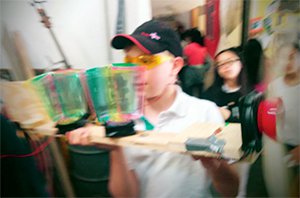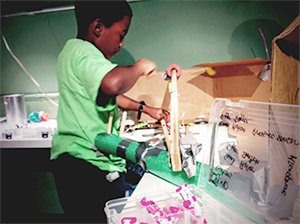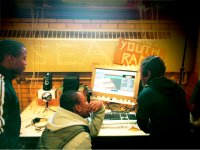Makerspaces Lead to School and Community Successes
Makerspaces encourage student success by demonstrating the value of failure, engaging students with standards and curricula, motivating them to care, and demonstrating real-world uses for education.
While the Maker Movement continues to grow, it hasn't yet gained its greatest traction, which currently sits untapped in the minds of the students in front of us. Through forming partnerships with community makerspaces or building a school makerspace, educators and decision makers everywhere have the rare chance to help bring this truly all-inclusive learning experience into their schools, districts, and communities in order to help all students. Here are four ways that the "new industrial revolution" will help your students succeed and help breathe life back into your craft.
Fail Better!
Spend some time as an educator on social networks like Twitter, and you will quickly come across memes, quotes, and countless links to evidence that failure is a necessary milestone in the learning process. For all the talk of how this sometimes-painful process is vital to growth, people rarely share examples of how to facilitate room for healthy failure in the classroom. Without the necessary structures in place, students can negatively internalize failure as evidence of just another thing that they don't do well.
That feeling of inadequacy changes quickly within the walls of a makerspace. Whether students are simply building bridges with toothpicks or prototyping water purification solutions for children across the globe, the first ideation of their project isn't going to work the way they want. In fact, if it does, they're doing it wrong and it isn't rigorous enough. With this in mind, makerspaces allow educators to embed mini-lessons in these tasks that will help students begin developing the grit and metacognitive skills needed to analyze and move beyond their temporary failures.
Bridging The Gap

One of the critical mistakes that classroom teachers, librarians, and administrators can make in pitching the idea of a makerspace to the powers-that-be is not clearly articulating how a makerspace helps students with their academic growth. While tinkering alone is a valuable learning experience, most educators currently work in a system that doesn't assess students on their ability to tinker.
While it's true that most student activities in a makerspace are easily deemed "STEM-based activities," that phrasing alone won't secure funding for a dedicated space. In order for a makerspace to thrive within a school, district, or community, educators must prepare curricula so that projects built within the space are standards-aligned and link directly to the work that students are doing in their classroom. By creating curriculum-wide, project-based lessons and units that offer evidence of student literacy and growth in critical thinking as a result of makerspace learning experiences, you will find that your idea is more easily accepted.
Making Motivation
As a rule of thumb, project-based learning and school makerspaces work much better as tools to motivate students than any marble jar, point system, or promise of pizza ever could. One of the first comments from any teacher or guidance counselor who spends time inside a makerspace is how well student Y is understanding, focusing, or behaving on the project in front of him or her.
By developing recurring lessons around project-based themes, with the reward of students visiting the makerspace, teachers and counselors get a golden chance to reach the students with whom we often struggle to connect. In return, we can use this motivating factor to help these students begin budding in the areas in which we want to see them grow. Makerspace projects have the ability to help struggling students see the value of their classroom work -- why it's relevant and how it shakes out in real, tangible, ways. It's powerful stuff!
Evidence-Based Success

Students who complete maker-based projects create real-world things. In order to see a project to its completion, they often need to overcome several rigorous intellectual challenges in the process. It's a valuable tool when a teacher can point to a real-world, student-made artifact as evidence that all students, particularly struggling ones, can thrive when we instill the necessary confidence in them. It goes a long way in a student's mind when he or she hears you say, "You just built a wind turbine that actually charges a cell phone. That was way harder than this equation." It is something that they can hold onto, use for reminding themselves that they're capable, and feel proud about. When we continuously build evidence of a person's success, that person becomes successful.
By helping bring the maker movement into their school, educators can help usher in the future of education. Through planning curricula-aligned projects, school and community makerspaces can help once again to democratize education and build learning communities where all students have a chance to grow into thoughtful, confident leaders of tomorrow.
Have you seen a difference in student motivation and performance in connection with a school makerspace? Please tell us about your experience.
